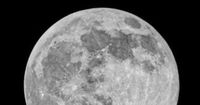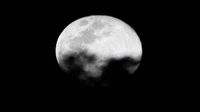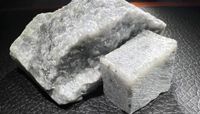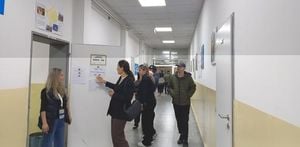A team from New York University Abu Dhabi has achieved a significant milestone in lunar exploration. Led by Dr. Dimitra Atri, the researchers have developed a pioneering soil mixture that mimics lunar dust, aptly named the "Emirati Lunar Simulator Dust." This innovative blend is intended for testing space equipment in preparation for the Emirates Lunar Exploration Project, which aims to send a mission to the Moon.
The soil mixture was created using locally sourced rocks rich in anorthosite, which closely resemble the mineralogical and chemical composition of lunar soil. The development of these simulators is crucial for preparing lunar exploration missions, especially given the challenges of transporting substantial amounts of lunar soil back to Earth.
The team harvested the anorthosite-rich rocks from the ancient Semail Ophiolite complex in the UAE, a geological formation with layers of rock analogous to lunar landscapes. This mixture has already been utilized in testing landing equipment, resource extraction tools, and environmental exploration techniques, helping to mitigate risks associated with future space missions.
What's more, the researchers have explored the potential for lunar agriculture, successfully growing plants in the simulated soil, which boosts the prospects for long-term human sustainability in space.
Dr. Atri emphasized that this project fortifies the UAE's burgeoning role in space exploration. He stated, "This initiative supports the state's efforts in lunar exploration, enhancing the performance of spacecraft, training astronauts, and testing lunar equipment. It also contributes to global efforts aimed at preparing for sustainable lunar missions."
The development of this lunar simulator aligns with various global initiatives to research lunar resources and habitats, showcasing the UAE's commitment to advancing space science.
The Emirates Lunar Exploration Project is poised to become a cornerstone of the UAE's ambitious space agenda. With the growing global interest in lunar resources, sustainable space exploration, and cultivating extraterrestrial agriculture, this initiative could redefine humanity's relationship with the Moon.
For those looking ahead, Dr. Atri's team’s simulations also enable scientists to assess key tools and robotics that will be vital for mission success including tests during landing sequences, lunar surface exploration, and resource extraction, which are crucial phases of the impending lunar missions.
In a statement to UAE state news agency WAM, Dr. Atri remarked, "The Emirati Lunar Simulator Dust will play an essential role in testing lunar rovers, astronaut training, and in examining lunar materials. This increases the effectiveness and safety of future lunar explorations."
As the UAE positions itself at the forefront of space exploration, this innovative research helps to lay the groundwork for future lunar missions, potentially leading to unprecedented advancements in space technology and human habitation beyond Earth.
Overall, this groundbreaking project mirrors the nation's aspirations to empower and inspire a new generation of scientists and explorers dedicated to uncovering the mysteries of the universe.






